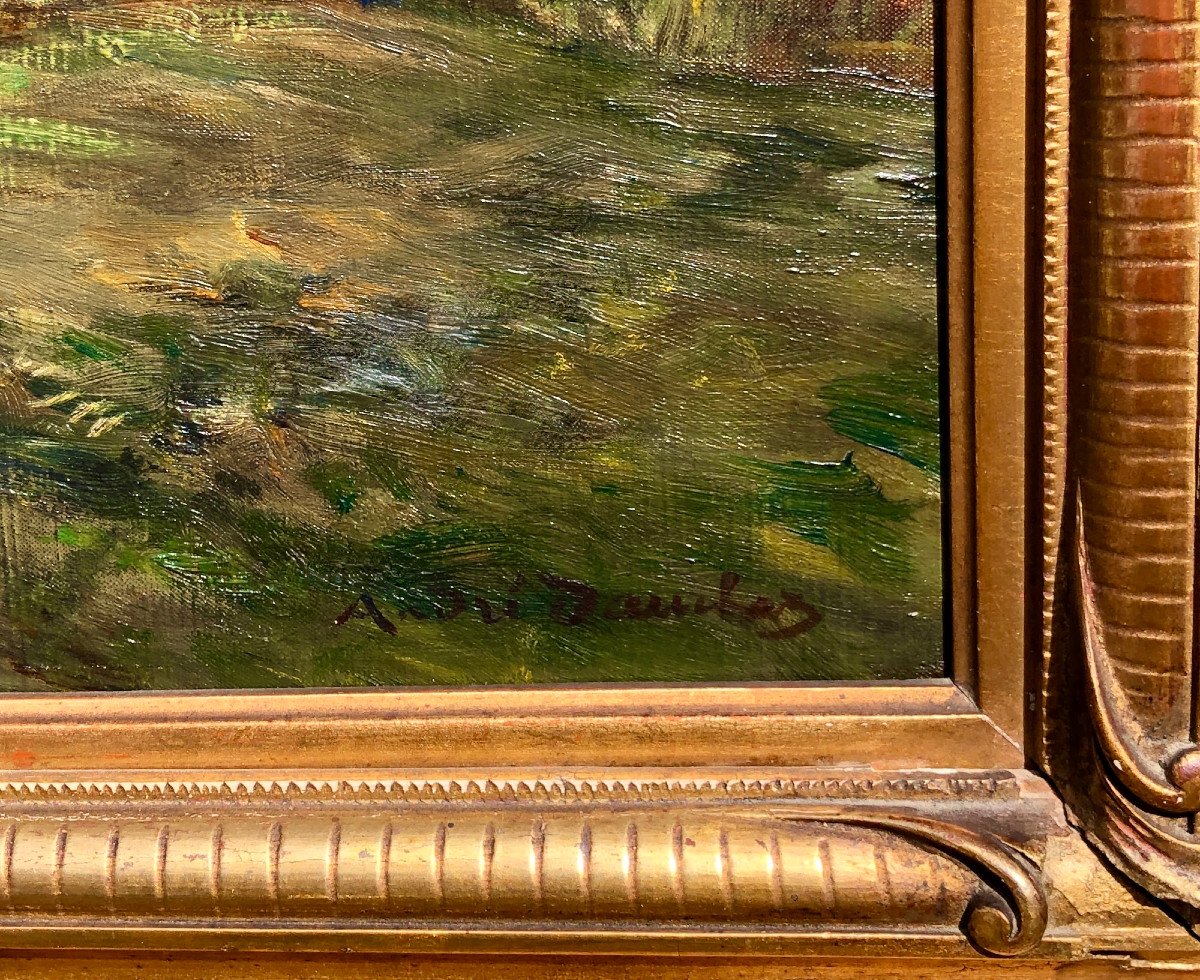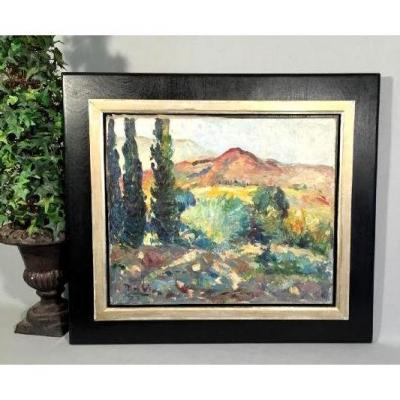His great-grandson told us that this painting dates back to 1917, when it was exhibited at the famous Galerie Petit in Paris. During WW1, Dauchez had sheltered his boat, the Rose des Vents, a 22 m tuna fishing boat, in La Trinité. By the end of the war, with no crew to speak of, he was only able to make short trips in the Gulf and around the Quiberon peninsula. He produced several paintings in Kerné.
The light in André Dauchez's landscapes unfolds with subtle delicacy. He captures the shifting nuances of Breton skies and infuses his scenes with a serene, timeless atmosphere.
André Dauchez (1870-1948). Born in Paris, a student of Luc-Olivier Merson, he practiced engraving from the beginning and it was with an etching after Isabey that he exhibited for the first time at the Salon of 1887. He only began to practice painting under the influence of his brother-in-law, Lucien Simon. In the 1900s, he was part, with Lucien Simon, Charles Cottet, Georges Desvallière, Maurice Denis, of a group of young painters nicknamed "the black band" by art critics, because they rejected the light canvases of the impressionists. André Dauchez went to Brittany at a very young age and more particularly to the mouth of the Odet. From 1890, the Dauchez family frequented Bénodet. In 1893, they moved into the house in Kergaït, which was located not far from the entrance to the estuary. These summer periods of the Dauchez family decided André's pictorial and maritime vocation, especially since his brother-in-law, Lucien Simon, also a painter, lived in this house until the end of the 19th century. André Dauchez is described as a painter of wind and estuaries, he is a landscaper. He prefers seasides, estuaries and ports. His knowledge of the maritime environment is flawless, he is a true sailor who navigates and discovers the shores by sea. André Dauchez is a pure landscaper, where the human figure is often absent. He handles graphite with perfection. In his drawings, retouching is non-existent. He is above all a remarkable engraver, author of nearly four hundred engravings. He also illustrated several books with great poetry, in numbered luxury editions, such as: "Le foyer breton: Contes et récits populaires" by Emile Souvestre, "Le livre de l'Émeraude" by André Suarès, "La mer dans les bois" by André Chevrillon which relates a boat trip on the Odet. Let us also mention his splendid and touching illustrations for Paul de Musset's tale: "Monsieur le Vent et Madame la Pluie". It was therefore in the engraving section that he entered the Institute in 1938. Although he traveled extensively, especially to Italy, it was in Brittany that he drew his inspiration: fishermen, seaweed burners, kelp gatherers, pardons... André Dauchez became president of the Société nationale des Beaux-arts from 1931 to 1936. His work is exhibited in the Naturalist Painters section of the Musée d'Orsay.


































 Le Magazine de PROANTIC
Le Magazine de PROANTIC TRÉSORS Magazine
TRÉSORS Magazine Rivista Artiquariato
Rivista Artiquariato